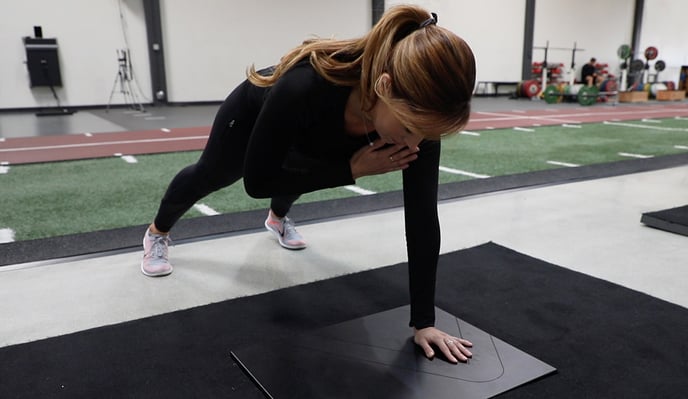The Plank Scan consists of a series of single arm planks and is utilized to assess upper body and core stability and function.
The Plank Scan or single-arm plank assessment is likely the most novel assessment from the suite of Sparta Scans. Our interaction with the ground (gravity) dictates how we move and forces transfer between our upper and lower body. The Jump Scan is a great measure of this holistic dynamic movement, but the Plank Scan is unique as it allows us to key in more on the trunk and upper body musculature and corresponding injuries. Post-injury individuals who may not be cleared to Jump are often able to perform a Plank Scan. For individuals who are unable to perform a single-arm plank, there are modifications that can be utilized. In the rehabilitative setting, this allows for a much earlier objective assessment of the individual and can help to guide rehab protocols as well as track progress.

Core strength and stability have been theorized to improve performance and reduce injury risk for both the spine and the extremities but there is actually very little evidence supporting this in the literature. Clinical measures of core stability are typically subjective or commonly endurance-based tests that have shown little validity, so there was a need for a novel assessment. Similar to the Balance Scan, the Plank Scan collects stabilization strategy data on the magnitude and direction of movement during the single-arm plank task giving a much more holistic measure of core stability. Independent research has shown the Plank Scan is adequately challenging to assess core stability and can identify athletes who later sustain trunk injuries. Just as important, internal analyses and independent peer-reviewed research have found the assessment and the variables utilized to be reliable across multiple populations.
